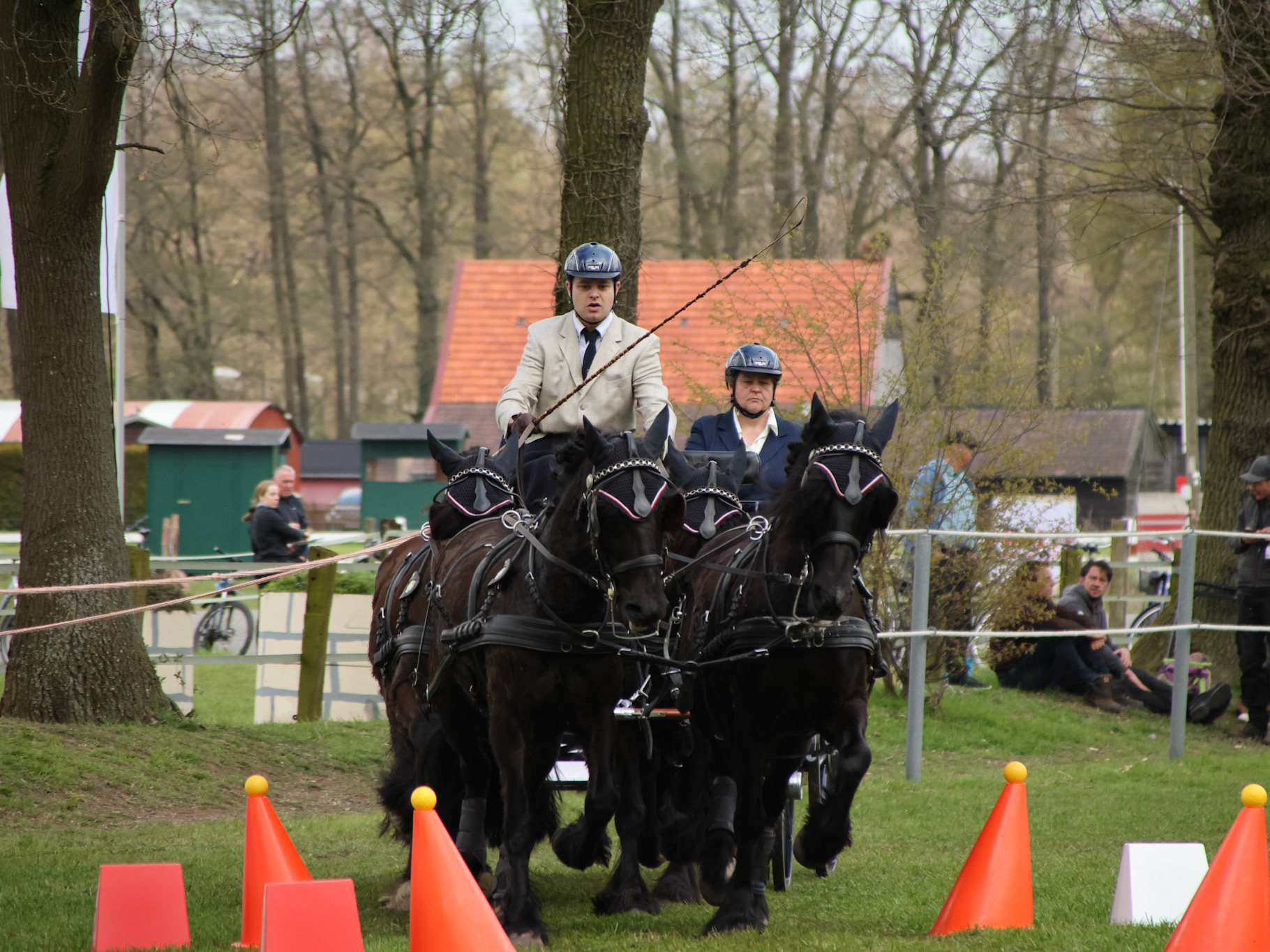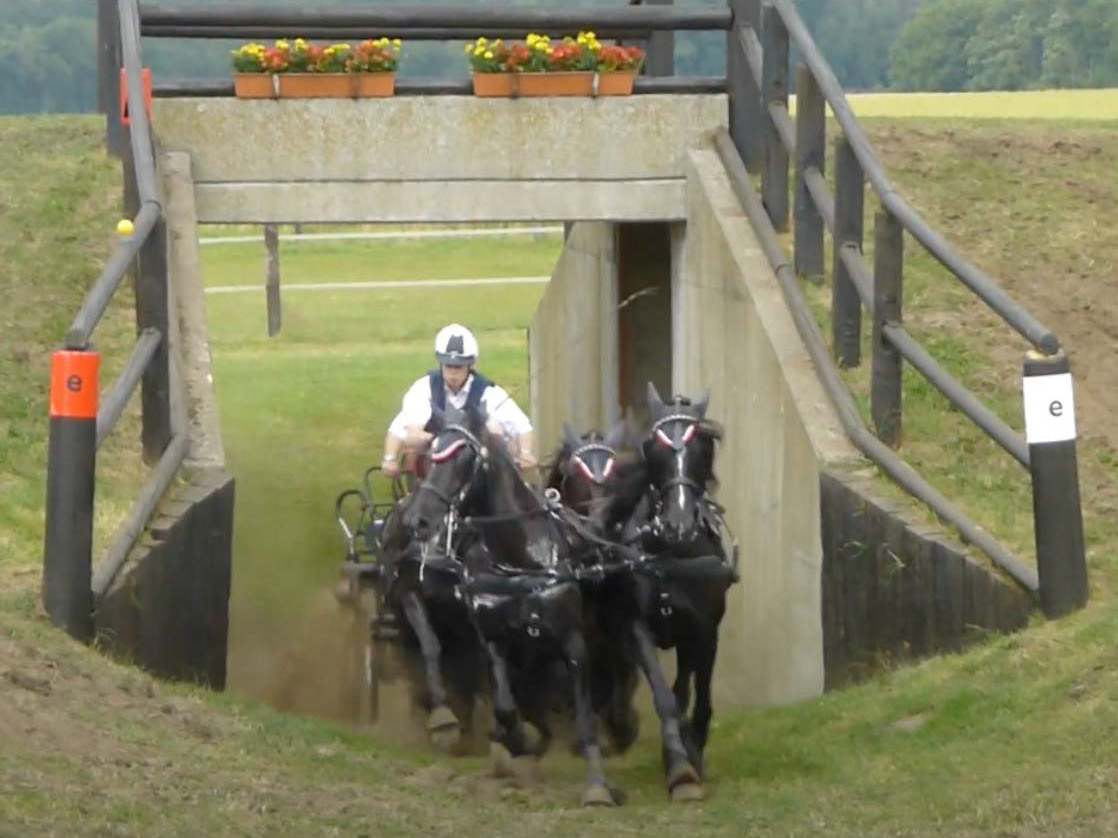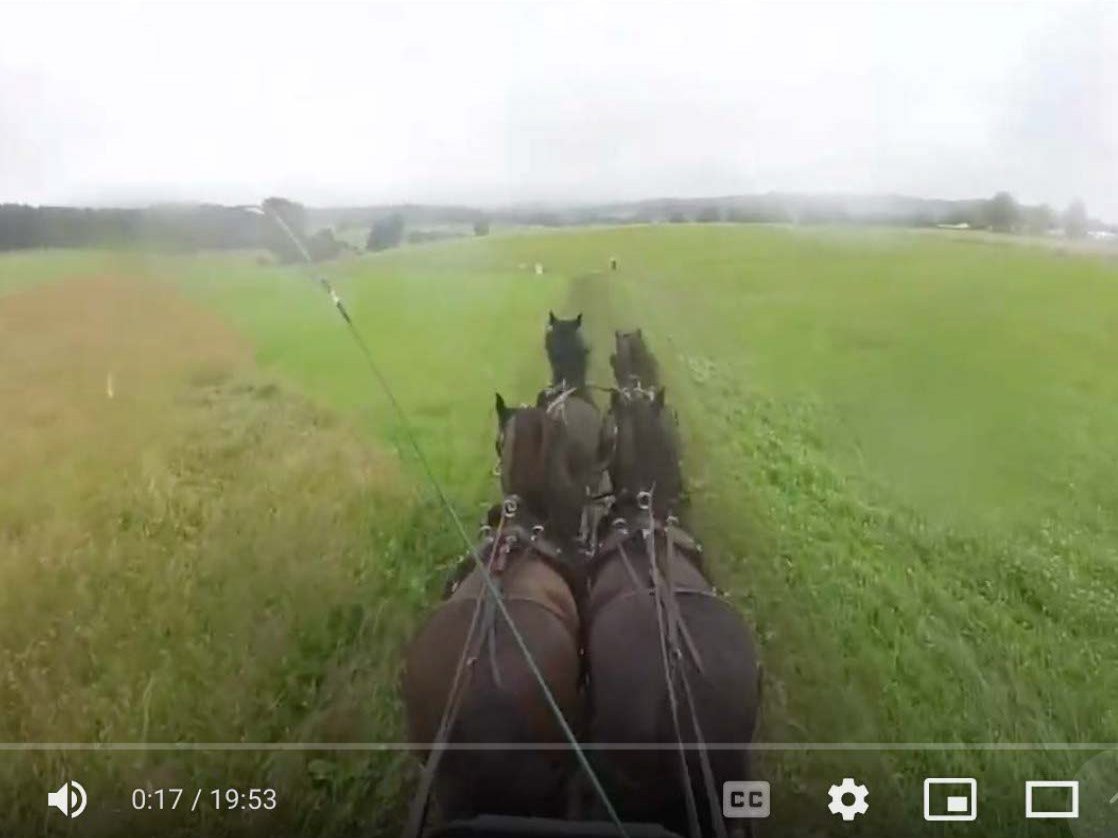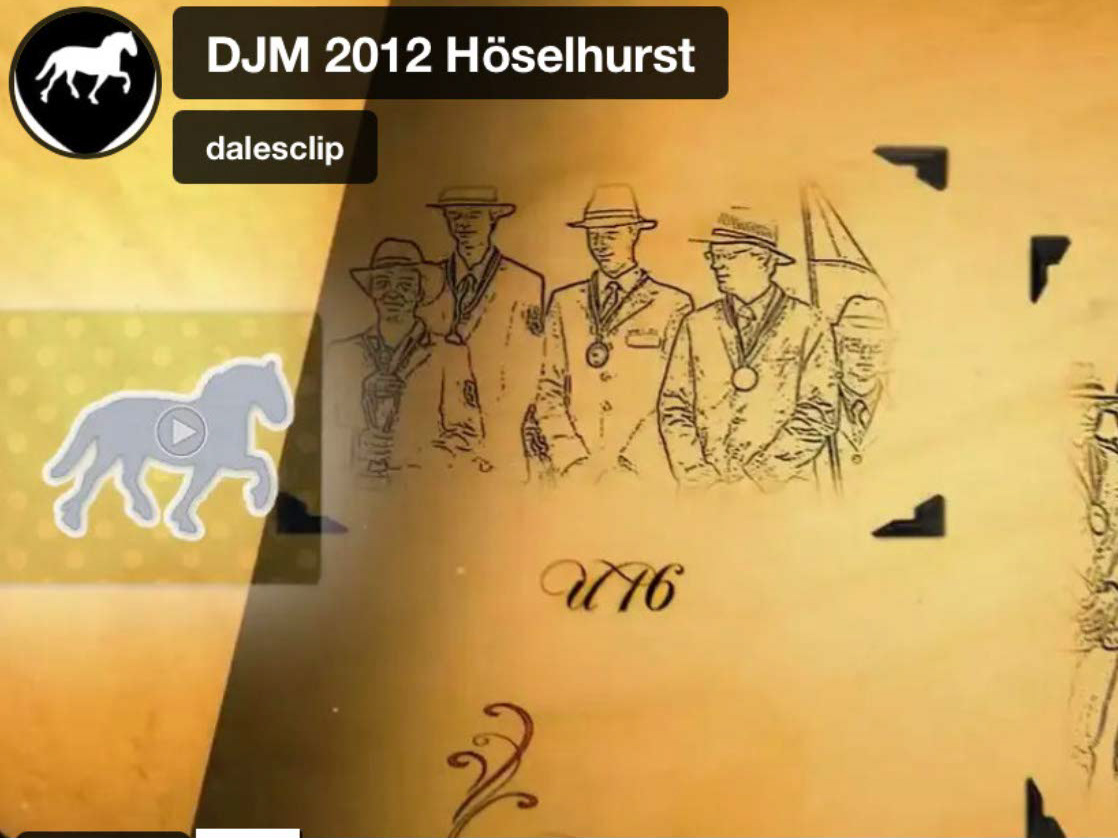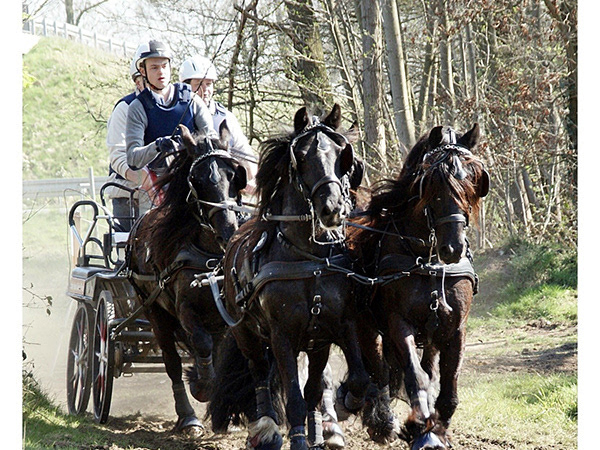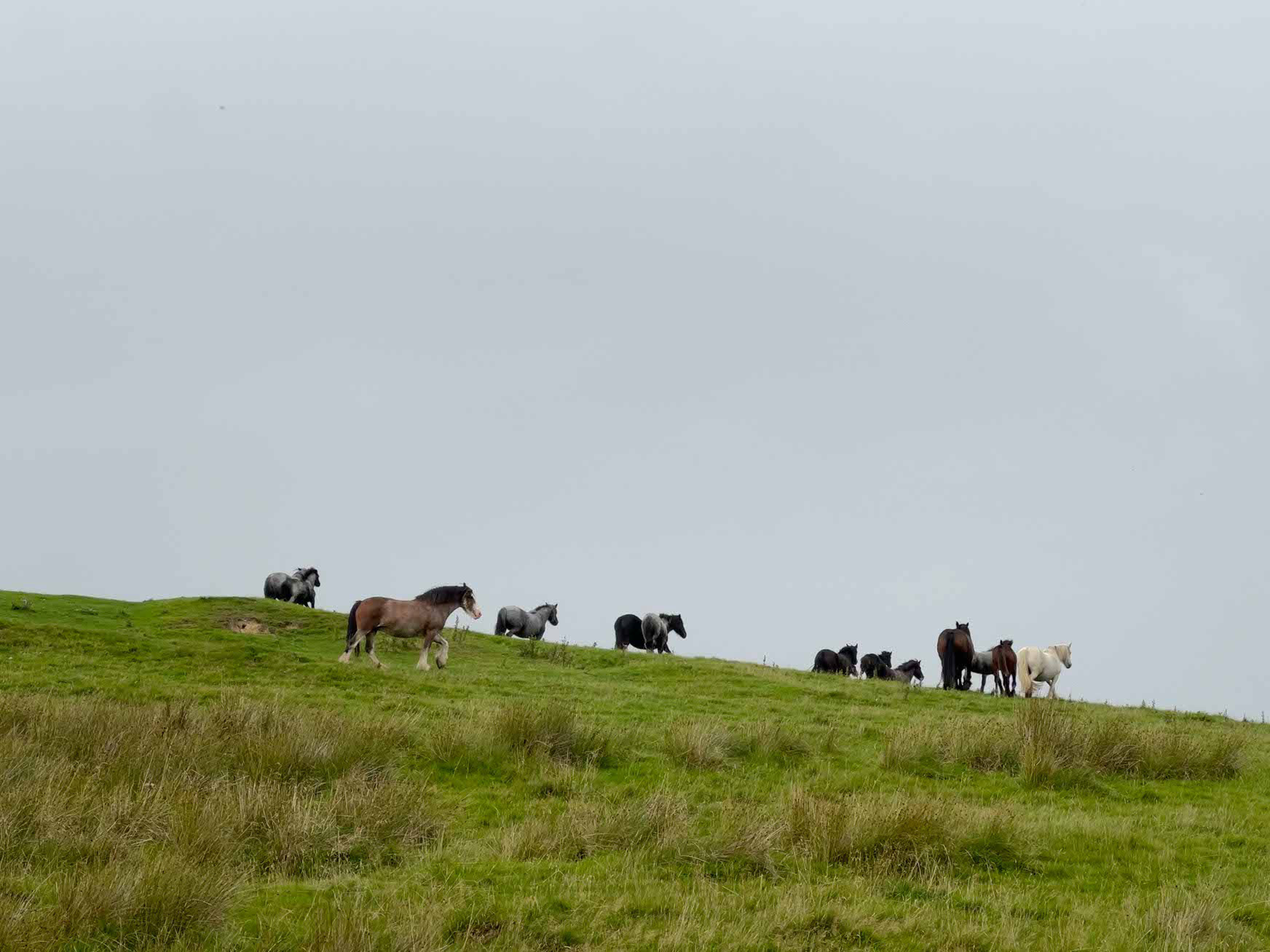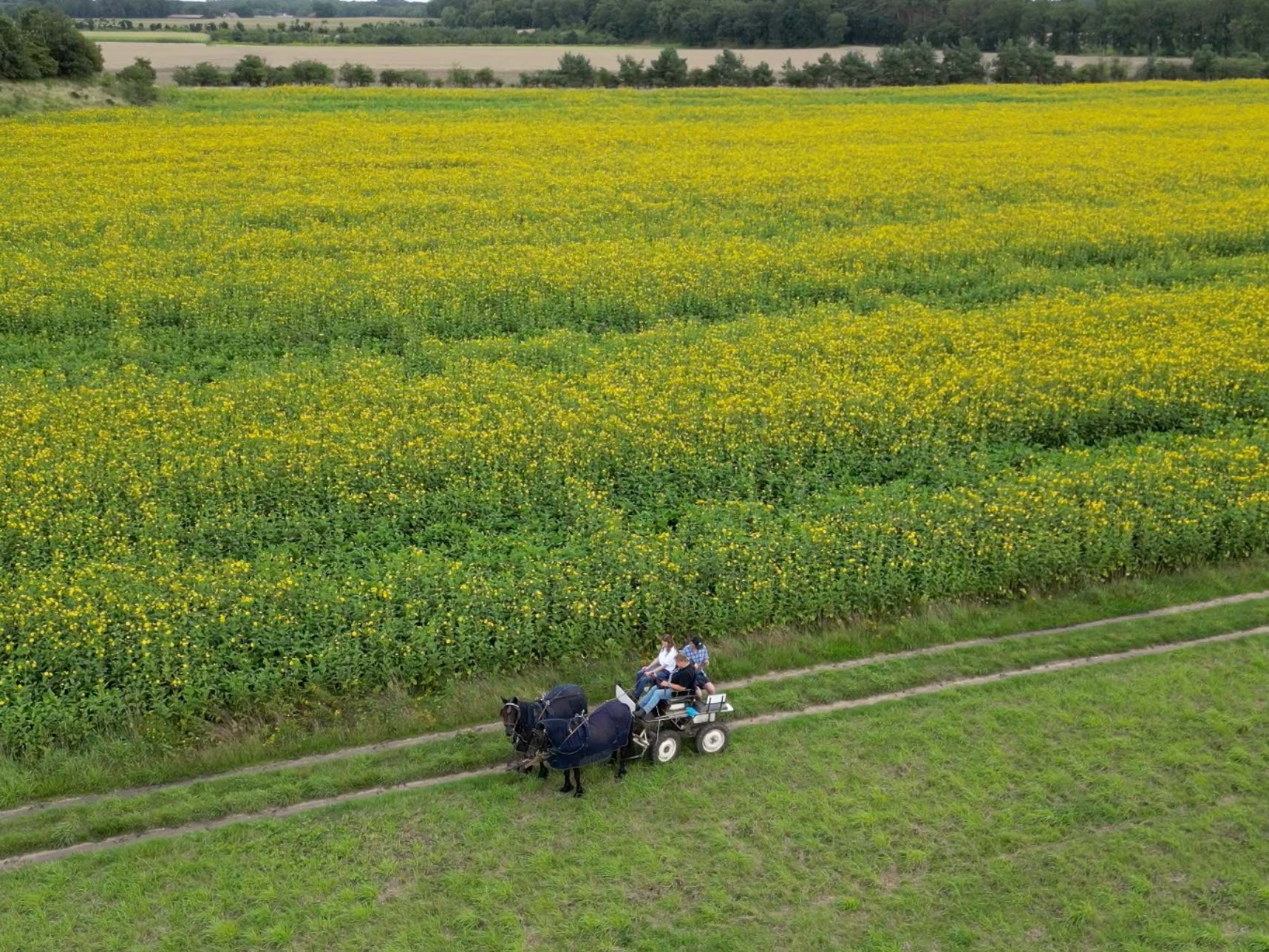The Origins
The Dales Pony originally comes from the upper valleys of the eastern Pennine mountain range, which stretches from Derbyshire to the Scottish border. The Dales Pony was bred particularly in the higher areas dominated by the rivers Tyne, Wear, Allen, Tees and Swale. In this region, lead mining was the main industry from the Roman era until the 1990s. This part of England was particularly suitable for lead mining, as there was both wind and water available for the production of this raw material.
The raw lead was then transported from the Pennine region to the northeastern coast, where it was loaded onto ships. Coal for the furnaces was in turn transported from the port back to the mines. Initially, this was done by muscular weight carriers called Jagger Galloway Ponies. In the late 17th century, the Scottish Galloway Pony was seen as the best-suited weight carrier and was therefore bred near these mines to ensure a sufficient supply of offspring for heavy transport. The largest, strongest ponies with the most movement were selected to carry the lead to the port. As a result, the Jagger Galloways and the Scottish Galloways were crossbred, and after centuries of breeding, the perfect weight carrier was created: the Dales Pony.
The Scottish Galloway Ponies were known for their exceptionally strong legs, which allowed them to combine speed, load-bearing capacity, and surefootedness even in rough weather and on rocky terrain. This also gave the Dales Pony a special level of strength, almost iron stability, endurance, and the ability to move quickly over difficult terrain. The pack bags contained well over 100 kg of lead, which the ponies had to carry for several hundred kilometers over the most difficult, unpaved English countryside.
The Dales Pony - A pony for work
The ability to carry heavy loads was not entirely uninteresting for British farmers either, and so it happened that they also discovered the Dales Ponies for themselves. Even back then, the Dales Pony was very comfortable to ride and equally strong for the heavy work on the farm. The ponies could pull carts with a load weight of about one ton over long distances. So a farm worker often sat on the Dales Pony while it pulled the heavy load up the English "Fells". The Dales Pony also did this with ease in winter when deep snow covered the landscape. With two Dales Ponies in front of a vehicle, it was possible to plow the field, but also to elegantly cover longer distances in a brisk trot.
In the late 18th century, the roads were paved, making it much easier to transport goods. Thus, the demand for faster horse breeds for the post or travel carriages increased. The most popular horse for this was the Norfolk Cob. Here, the stallion Shales, born in 1755 and significantly integrated into the Dales Pony bloodline, was particularly popular. Even today, many well-known bloodlines can be traced back to this stallion. The Dales Pony owes its particularly fast trot, with which it can easily cover long distances without a break without losing its carrying and pulling capacity, to this crossbreeding.
A brave companion during war
At the beginning of the 20th century, there was a great demand in England for a pony that could pull the heavy ammunition and gun carriages of the British Army. Many Clydesdale stallions, which roamed the Lake District, were crossed with the Dales Pony to further enhance this ability. While this was very efficient for farmers, it was also a threat to the pure bloodline of the breed. As a result, in 1916 a forerunner of today's Dales Pony Society was founded. This association opened a stud book that aimed to protect the sovereignty of the breed. Even today, the white markings of the Dales Ponies are attributed to the Clydesdale horses.
Between 1923 and 1924, the British Army took over 200 Dales Ponies to use them as pack animals in both World Wars. In the Second World War, the Dales Ponies even experienced a new heyday, as fuel prices had risen significantly again and farmers could no longer afford to fill up their tractors. Therefore, the Dales Pony was once again used for heavy field work. As a result, the Dales Pony emerged strongly from the wars and was able to prove itself once again excellently.
The hard work is finally over
At the end of the 1950s, transportation as well as farm work were mainly dominated by machines, so the Dales Pony Society had to look for new breeding goals. In the 1970s, an evaluation guideline for bred Dales Ponies was developed, which is still in use today. Ponies are judged at regular shows and winners are crowned to preserve the best possible bloodline. While the number of foals increased from year to year, currently there are fewer offspring than ever before. In 2022, there were less than 50 foals in the whole world.
A true all-rounder
The Dales Pony was bred for a specific purpose in a rugged terrain. However, as the requirements changed rapidly, the Dales Pony was able to adapt quickly and successfully. This ability is still of great importance today and is what defines the Dales Pony community. The combination of strength, agility, calmness, adaptability, courage, surefootedness, and intelligence makes the Dales Pony a top-class riding and driving pony. A true all-rounder.

